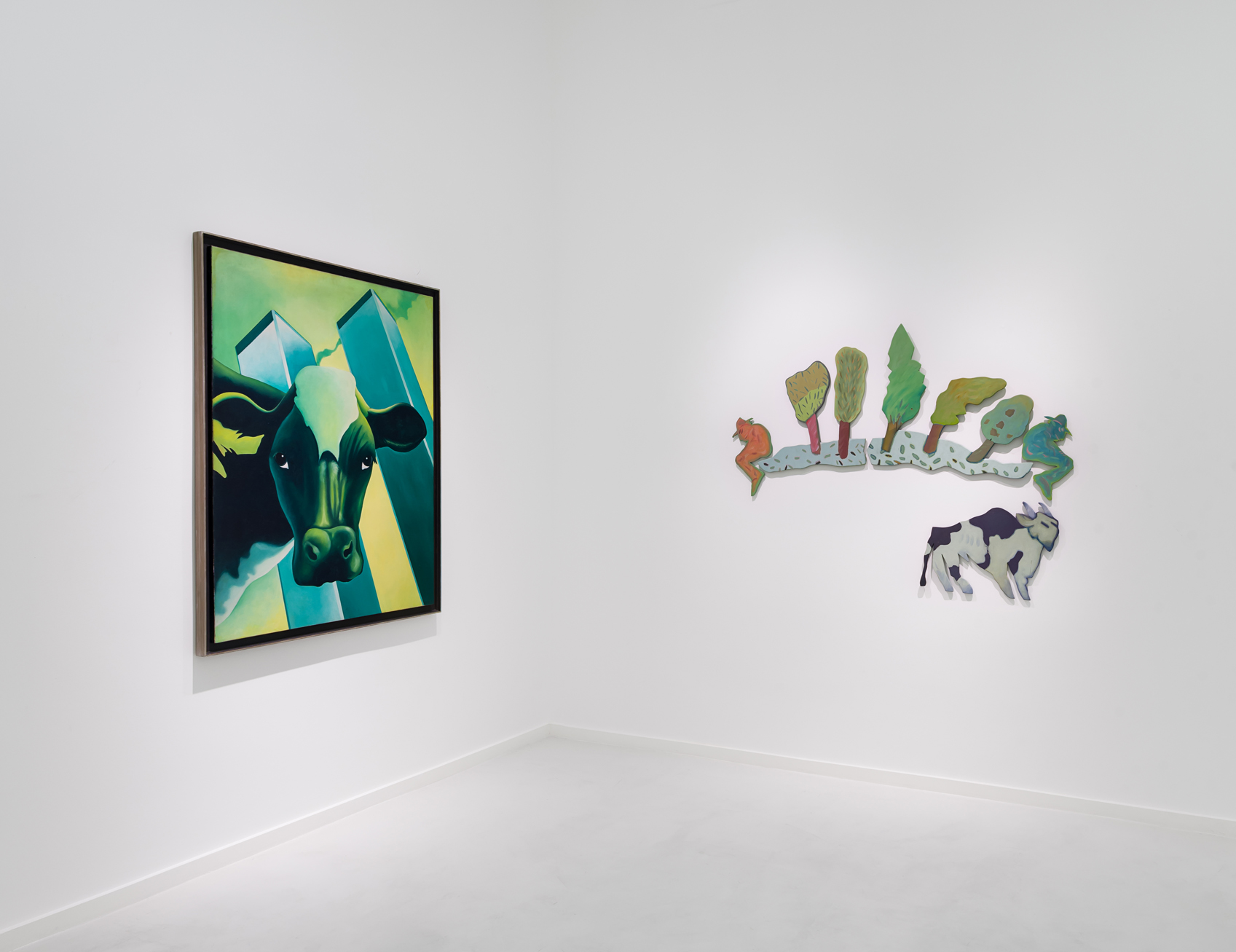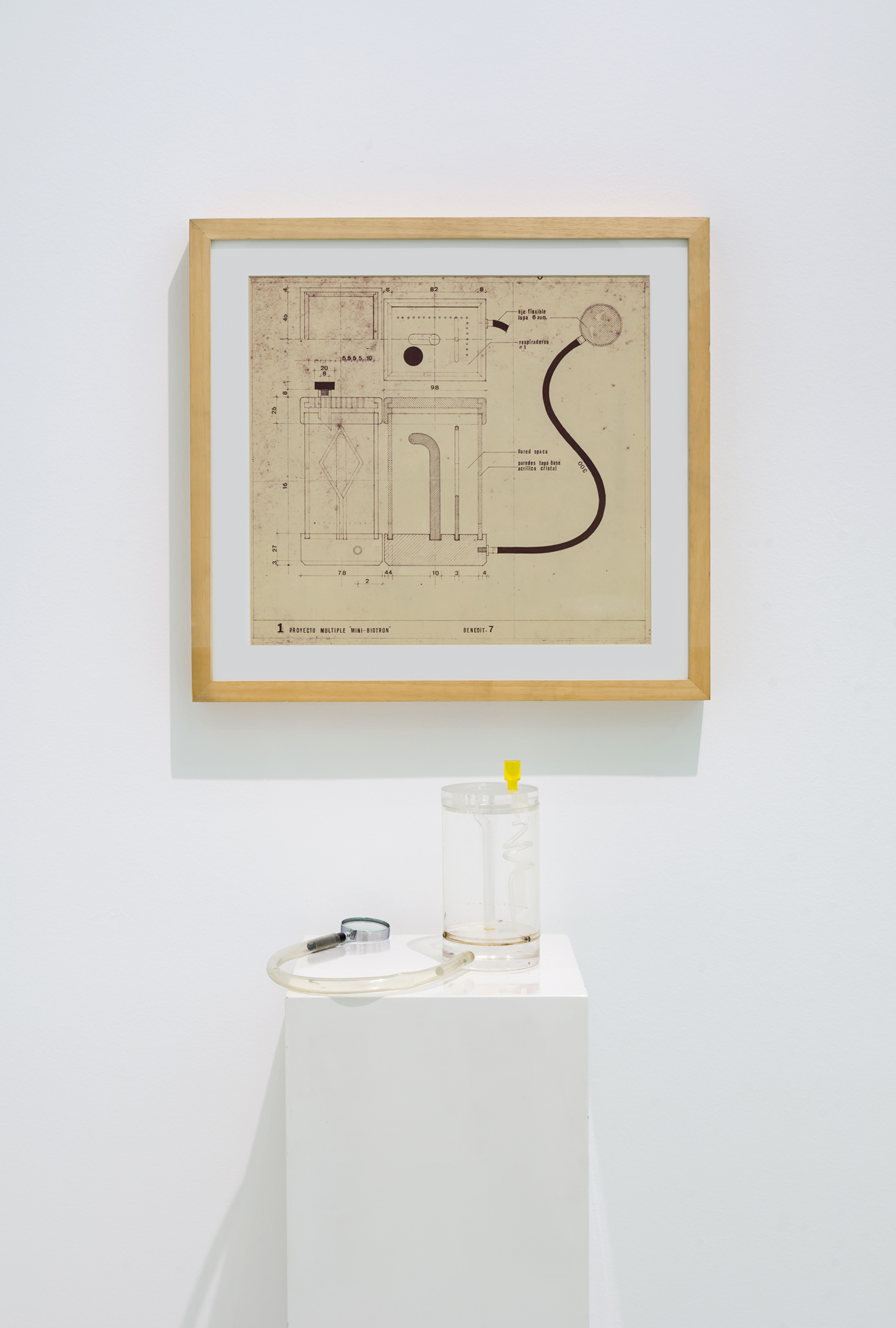A community of origin
17/4/24 - 31/4/24
Since the late 1960s, Nicolás García Uriburu and Luis Fernando Benedit, artists that MC Galería brings together in this exhibition, addressed with their works a concern for nature, bringing art and ecology together in a pioneering way, with the intervention or incorporation of natural elements in their productions. Their trajectories have a common origin: they met while studying architecture at the University of Buenos Aires, became friends and developed their artistic practice in a self-taught way parallel to their university education. Both took their first steps in the artistic field with painting at the beginning of the sixties, a decade marked by political ups and downs, by censorship, but also by radical ruptures in art. It is possible to find between them an affinity of thought that expanded, from a shared disciplinary root to an artistic exploration with new media and supports, alien until then to the field of art, to investigate in an ecological and ethological problem that will distinguish them from then on.
The word ecology, from the Greek Oekologie, has its root in the term Oikos, which refers to the house, the habitat, the environment where organisms develop. In this conception, the house cannot be reduced to a building construction, but encompasses a whole territory, its vegetation, the other beings that inhabit it and allow its existence. “This complex integrality is what the science of ecology is all about,” says biologist Marcela Castelo. This shift seems to have operated in both artists, from a concern for habitable spaces for human beings to a consideration of the planet as the common home of all species.
The environmental concern that can be found in their works has both a planetary imprint and a local root. Together they undertook, around 1961, a trip to Peru that was decisive in the development of a thinking committed to the cultural history of the Latin American continent, which was later manifested in their productions. In the case of Uriburu, it was expressed in his permanent defense of the continent as a natural reservoir of the planet, denouncing the depredation of the hegemonic powers. In both of them there persists a work with the rural imaginary and the tradition of the Argentine landscape, especially of the Pampean plains. In García Uriburu’s work this can be seen from his early paintings to his series dedicated to ombúes and bulls; in Benedit’s work it is revealed through references to Argentine history, to traveling painters or the painting of Florencio Molina Campos, as well as to the design of furniture with cow bones and hides. Marcelo Pacheco described the latter as the most criollo of Argentine artists, a category that, far from a stereotyped or universalist expression, manifests a force capable of “phagocytizing what is proper and what is foreign, what is learned and what is inherited, what is national and what is international”, a phagocytic force that can be traced in national essay writing, from Ezequiel Martinez de Estrada to Rodolfo Kusch, some of them frequented, at least theoretically, by Benedit.
With these concerns for the future of the planet, towards the end of the 1960s the works of both artists acquired international visibility, both for the material radicality of their proposals and for the conceptual development under the orbit of what Jack Burnham called “systems art”. This denomination, conceived by Burnham in an article published in September 1968 in Artforum magazine, soon had an impact on the local artistic field, particularly in the figure of Jorge Glusberg, who from the Centro de Arte y Comunicación (CAYC) promoted the production of experimental works of a conceptual nature through this category. Benedit had an active participation in this center, being part of its board of directors and integrating the Group of Thirteen that emerged from it. Uriburu, installed abroad during those years, had a more peripheral participation, but he exhibited in many of its shows and his links with the center were fundamental for him to develop the coloring of the Río de la Plata in 1970, a process that had begun a few years earlier.
In 1968 he made his first coloring by pouring thirty kilos of flourescein, a harmless dye, over the Grand Canal of Venice, with which he dyed its waters green. In a Europe still convulsed by the recent events of the French May, which impacted in deep criticism towards the Venice Biennale about to inaugurate its 34th edition, Uriburu, in an anti-institutional gesture, intervened directly on the real space with an ephemeral action that exceeded the traditional practices of art. This action, which attracted the attention of the press and even caused him to be arrested by the police, marked a turning point in his career: he oriented his production towards the environmental issue and began a series of colorations that he carried out all over the world.
Meanwhile his fellow student, Benedit, traveled on a scholarship to Rome in 1967 to study landscape architecture with Francesco Fariello. Driven by the knowledge of botany and biology acquired there, and with the advice of ethologist José Núñez, he developed Biotrón, one of his most paradigmatic works, which he presented in 1970 at the XXXV Venice Biennale, just two years after García Uriburu’s first coloration in the same city. It consisted of a large aluminum and transparent Plexiglas structure with artificial plants inside, to be inhabited by four thousand bees, which could either collect pollen from the technological flowers or go outside. In addition to this work, Benedit presented Minibiotron, a transparent acrylic piece for insects or arachnids to inhabit, which allowed them to be observed closely through a magnifying glass. These habitable proposals for living beings, as well as the work Fitotrón, a closed environment for the hydroponic cultivation of plants that was exhibited in 1972 at the Museum of Modern Art (MoMA) in New York, together with the labyrinths and circuits that he developed in those years, are based on his interest in the study of animal and plant behavior, as well as the express link between science and art, which puts into discussion the disciplinary limits and the traditional conception of the figure of the author.
Both Uriburu’s colorations and Benedit’s large habitable installations show a projectual aspect in their work methods, -undoubtedly supported by their architectural training- consistent with the difficulties of realization, both in budgetary terms and in terms of the need to carry out interdisciplinary research. This is evident in the development of schemes and project drawings, especially in Benedit, essential for planning technical aspects, as can be seen in the drawings presented here, Proyecto múltiple – Mini Biotron (1971) and Proyecto múltiple – Pecera para peces tropicales, ( 1971). Other drawings, which did not necessarily go beyond their apparent project aspect and where Benedit leans towards a more pictorial elaboration, represent mechanically articulated animals that display in detail the different elements that compose them, as is the case of Proyecto para una langosta articulada ( 1974) and Fernando Rufus – Vulgar “Hornero” (1976). Here, the natural-artificial relationship is revealed, but rather than as an opposition between nature and culture or nature and art, it appears as a joint collaboration where the technical artifice acts in favor of nature, being able to give a technological response to a planetary crisis caused by anthropic impact.
Prototypes for an artificial garden at the Iris Clert gallery in Paris a few weeks before his first coloring. Still focused on the production of objects, he presented a group of works on cut acrylic plates linked to the natural world, cats and lambs, clouds and waterfalls, which made up a plastic garden in a pop setting. Already at that time, animals acquired a prominent place in García Uriburu’s work, which was later sustained by the representation of anacondas from the Amazon, giraffes in danger of extinction, oiled penguins, anteaters and vicuñas, dolphins and cows. Uriburu found in animals one of the most outstanding manifestations of nature, which he contrasted with famous New York City skyscrapers and constructions, such as a giraffe in front of the Pan Am mirrored tower or the head of a cow next to the Twin Towers. In this way, the artist denounced the binary opposition between nature and culture, a modern operation that, as Bruno Latour affirms, hierarchizes humanity above all living things, reducing them to mere resources to be exploited. In this sense, the city, the ultimate expression of the modern domination of the human, is represented in García Uriburu’s paintings in contrast with natural elements, and he also chooses for his colorations waters located in urban spaces, denouncing the destructive action of Man on them.
The work of both artists expresses this relationship, not necessarily oppositional, between nature and culture. The concern that both seem to show for animals, both for the local ones with their rural traditions and gaucho traces, as well as those of manifest precariousness and whose continuity as a species is in danger, allow us to think -from Benedit and García Uriburu, but also beyond them- of belonging to a community more than human, whose motivation is a concern for the habitat of all beings on the planet, that community that Latour calls “earthlings”. Recently María Puig de la Bellacasa stressed that the ecological “understood as the interdependent interaction between multiple forms of life, is collective by definition”, which leads not only to strengthen particular searches and knowledge, such as the proposals to merge life and art observed in García Uriburu, but also to an ethological concern, of the type developed by Benedit, which does not stop at the observation and investigation of animal behavior, but leads to an improvement in the life capacity of the whole, human and non-human. In this sense, an ecological formulation such as the one that can be observed in these works, but which – again – goes beyond them, also demands a strong ethical commitment.
Jesu Antuña y Mercedes Claus






